Making the Most of Mixed Containers
We all know that mixed containers are among the hottest and best-priced item selling at retail today! One factor driving demand for containers is the amount of exposure featuring mixed containers in consumer media. Television shows on PBS, HGTV and the BBC feature a host of different garden-themed programs. Magazines like Woman’s Day, Horticulture, Fine Gardening, Garden Design, Better Homes & Gardens and their specialty publications reinforce current trends that reach millions of gardeners each year. Gardening books provide outstanding imagery and information on how to create many different gardens and containers. These are all great sources of inspiration for viewers and readers alike who find that “call to action” to recreate great garden spaces in their own home environment. The consumer media literally “plants the seeds of dreams” for gardeners to cultivate.
Filling the Demand
This results in greater opportunities for garden centers to help fill the demand for specialty garden plants, products and accessories. Today it’s as much about selling lifestyles as it is about plants. Garden centers are stocking more specialty products at the expense of other lower-margin, bread-and-butter items. The benefit, of course, is higher margins and quicker product turnover. The key to taking advantage of this trend is having a good supply of mixed containers available either produced on site or purchased from suppliers. If purchasing containers, work with your vendors to get both the quality of product your customers expect and forms that match the price range appropriate to them. Avoid our industry’s tendency to undervalue these products or stock too many plants that are outside the price range of the majority of your customers. However, do stock a selection of higher value combination planters to inspire customers and fill their needs for special event decorations. These containers can also help attract potential new customers to your store.
Decorating Confidence
Homeowners are taking on more home and garden decorating projects than ever before because of the confidence they have gained through consumer media and the Internet. Between the information support available and the introduction of high performance annuals and perennials, fear of killing plants gets to be less of an issue each year. Overcoming this “fear factor” is an important hurdle that cannot be underestimated. Until customers get past it, their spending will only grow in proportion to actual garden experiences. Here are some ways this might work:
- Host seminars and “how to” clinics that share your expertise with their desire to plant gardens and containers.
- Use POP or other materials available through branded plant programs that provide consumer support and gardening information.
- Create information that targets your customers’ specific needs to help them avoid problems in their own gardens. For example, in areas where “hard water” is common, develop fertilizer recommendations that maximize performance of plants sold in your garden center.
- Merchandise these solutions to maximize additional sales opportunities.
- Train and encourage staff to communicate benefits to customers making purchases.
- Use and display information available through local extension agents, master gardeners or garden writers active in your community.
- With all the resources available today it is easy to provide your customers with the information they need to be successful.
Time Limitations
Keep in mind time is of great importance to your customers. Give them ideas on how much time is required to properly handle and care for plants, influencing their comfort level and success potential with each purchase. The word “project” is important in this situation. Take advantage of this dynamic and create a series of garden projects that address customer time limitations.
- Provide estimates on how much time is involved in creating and maintaining each project.
- Encourage planting in small areas or a limited number of containers rather than take on large projects at one time.
Too often plants are purchased with the best intentions for installation, but due to time limitations or project size, plants are left unplanted and not watered or maintained properly for a week or longer. These plants often become so severely damaged by water stress, they cannot thrive or survive once they are installed. The end experience further reinforces the customers’ fears of failure in the garden and can limit their future purchases.
Theme Gardening
Theme gardening in containers is certainly not a new idea, but it is a good example of how to implement garden projects that are time sensitive and easy to maintain. Most of these projects can be accomplished in as little as 1-2 hours and require little maintenance other than watering, fertilizing and periodic trimming. Because the scope of a project is limited by the size of container, smaller containers are easier to plant and maintain than large garden spaces. Each project should be designed to provide results in a defined amount of time, helping the customer understand the level of commitment required to complete the project. Use signs to tell your customer what to expect. For example “Gardens in under two hours” can become a regular feature with plants and themes changing throughout the year. Some ideas you are already familiar with include :
- Edible gardens (mix herbs, vegetables and edible flowers)
- Butterfly or hummingbird gardens (mix herbs, vegetables and edible flowers)
- Moonlight gardens (use white, silver and pastel pinks) And how about other nontraditional themes like:
- Paradise gardens (use of tropical-themed plants with exotic names)
- Chocolate gardens (use plants like “chocolate” cosmos, “chocolate” calibrachoa, etc.)
In addition to the themes mentioned above, consider theme containers that tie into events happening in your community. Does your city host any festivals or special celebrations? With the selection of plants available today your opportunity to connect with community events is wide open!
Seasonal Stocking
When it comes to selling combination planters, garden centers are usually well stocked in spring when it is possible to sell just about everything, including weeds. But what about summer and fall? Why not have options available during these periods of the year when garden purchases are normally lower? If producing your own containers, be sure not to ignore these additional months where there are opportunities for customers who need to refresh their gardens. If purchasing from local vendors, develop a plan to have an ongoing supply of containers throughout non-peak seasons. Having product to sell is essential if you want customers to have a reason to come back into the garden center on a regular basis.
Do It Yourself
The trend of “do it yourself” (DIY) is another opportunity for combination planters. Build programs using information and component plants that inspire customers to make their own containers. Many of your customers want to plant their own mixed containers, so make it easy for them. Inspire them with examples of good containers (remember those large, high-value containers mentioned earlier?) and then have lots of component plants from which they can build their own. Instead of sticking to the recipe in your examples, provide a range of different plant options that can achieve the end result they desire. This allows them to customize to meet their own preferences in plants and colors.
By offering a list of plants that can be used, you minimize the risk of losing sales if a customer does not like or cannot purchase the components required for a combination. What if a specific plant needed isn’t available? Rather than lose the sale completely, have options available that can be used to achieve the customer’s desired result.
- Position recipe cards and support information with the plants to make it easier to understand and select product in case sales associates are not available.
- Group plants by appropriate growth habit, making it easier for customers to select product from the range of choices available. Unless they know what these plants will grow up to be, you need to help them with their selection process.
- If possible, have a good example container in the same area to illustrate how to achieve the finished result.
- In addition to the small component plants required, offer a good selection of gallon or larger sizes of individual plants that allow the consumer to create additional instant impact containers or fill in garden spaces that have already bloomed out earlier in the season.
- Have appropriate merchandise positioned near the display to provide all the needed supplies to complete this project pots, soil, fertilizers, accessories; put them all within easy reach of each display.
Not only can these plants be used for creating combination planters, they can encourage gardeners to replace spring plants after the season with summer flowering annuals/perennials of sufficient size to keep existing containers looking full and mature. Encourage gardeners to discard plants past their prime by demonstrating this in your landscape and displays. Nothing leads and inspires like good example!
Holding Events
Now that you have customers inspired, why not hold a contest that lets them showcase their own creations? Themes can be assigned, but periodically have customers choose the theme. Promote the idea, stock plants and accessories that supports your theme, and set dates on which judging will take place using photographs and information the customer provides.
Prizes for winners can be as simple as gift certificates from your store. Entries should be featured on a wall or bulletin board where customers can view and even vote for their favorites. If you have a newsletter or Web site, feature your top three entries and create a story to support the winner of each contest. Let these participants be your celebrity promotions team; it is hard to beat third party, independent endorsements!
Color Coordination
Of all the tools available that help gardeners create containers and gardens that fulfill their expectations, color matching is one of the most effective. By following a few concepts it should be possible to create some beautiful mixtures in the garden. You don’t have to own a color chart to get it right. Fortunately, Mother Nature has done some combinations that look great but don’t follow any rules! Be sure to provide your customers with examples and images that inspire and educate them in making color selection. A great way to get started is to create:
- Monochromatic color combinations using plants within the same color category. The different shades of yellow, blue, red, orange or even just white result in beautiful pots and baskets that will stand out in any garden. When doing monochromatic combinations pay attention to texture and foliage color and how this will provide a nice background to the flowers.
- Harmonious color combinations using colors that are close to each other on the color wheel. For example, mixtures of red, orange and yellow are harmonious with a bold look.
- Contrasting color combinations using colors that are opposite of each other on the color wheel. When put together they are bright and catch the eye as appealing and fun.
There are tools available that demonstrate color combining for use in the garden center. Many tags have color chips that show both contrasting and harmonious colors based on the flower color of the plant selected. There is also POP support that shows how to combine color for optimum results.
Changing Seasons
Color does not have to stay the same throughout the season. Like all gardens, mixed containers should evolve and change from one season to the next. It would be great if the plants used where capable of providing an uninterrupted show of color from spring to fall, but more likely there will be times flowering is not possible. Either the foliage should provide a key element to the container, or the consumer should be comfortable replacing that particular plant with one more appropriate for the season. The color scheme should evolve to fit the season and provide dramatic color in the garden.
An example of this would be to start with a mixture of yellows and purples for the classic spring look (use long-lasting yellow flowers like coreopsis or bracteantha and combine with viola, pansy or other spring-flowering annuals in different shades of blue and purple). As the heat of summer ends the flowering of pansies and violas, replace with something like a bright red geranium or coleus that provides color throughout the summer. Now the container has gone from purple/yellow to red/yellow. As summer comes to an end, change the heat-loving plants to include flowers that reflect the bronze and purples associated with fall.
Color can be built through the many plants sold in late summer, like fall mums, cabbage and kale, pansies and a whole host of other plants available during this season. By keeping the plants that still look good and are flowering and replanting the past-prime plants with other fall colors, the containers take on a whole new look and feel for the garden.
Mixing Plants
Encourage your customers to mix annuals with perennials, grasses, vines, shrubs or other plants. Many people are purists and feel that these combinations are inappropriate. But, with so many incredible plants to choose from today it would be a shame not to take advantage of the diversity available. Once again, inspire customers by example and create displays that show them how to bring together plants that are usually displayed at opposite ends of the store. Combinations are fantastic because they allow us to take plants that may not be outstanding by themselves, but when combined with other plants and flowers, their weaknesses are overcome. Have a favorite plant with large showy flowers but less than ideal stem strength and growth habit? Combine it with plants that provide structure and support to hold it up, and let it show off. The value of each plant is increased as other plants in the combination compensate for characteristics that are not ideal.
Instant Impact
And finally, lets face it, the days of creating gardens through years of work and planting are no longer the norm in our society. Americans are moving at a higher rate than ever before, and this mobility is influencing how we garden. The lack of long-term commitment to houses drives demand for instant landscapes and gardens that appear established but in reality, may be only a few months old. In this scenario, mixed containers provide that mature garden feel and can be added to or changed out easily to fit the owner’s sense of style.
Another factor stimulating gardening today is the impact interior decoration and sensational gardens have on the resale value of homes. There is a market segment that exists just to build equity for houses to maximize value and profit on these properties. People who are not gardeners are purchasing plants and planters to enhance salability. Once again mixed containers provide instant impact to yards and patios that enhance the visual image and value of any house. The planters can be easily written into the sales contract to transition with the property or just as easily be transported to decorate and enhance the next property. Although this is not the poetic image of creating gardens that enrich the soul, it is a dynamic enriching our businesses.
Whether your customer is a seasoned gardener or someone just trying to make their house more attractive, take advantage of what container gardening has to offer. With a little bit of education and inspiration you can make customers more successful and more satisfied with their gardening experience. If repeat sales and more purchases per visit are your goal, then here is a tool for you just waiting to be exploited.

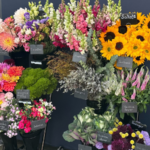
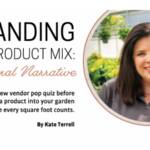
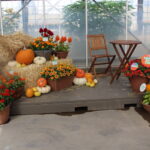
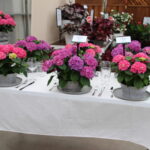


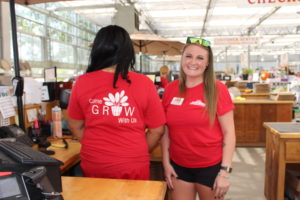

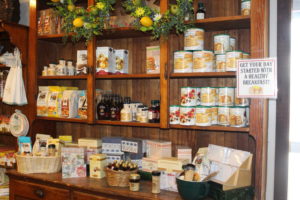


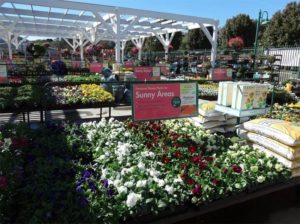
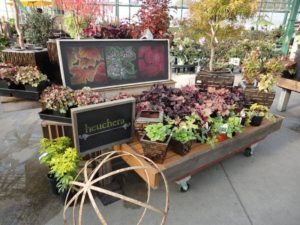
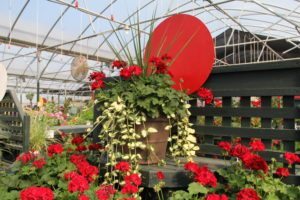
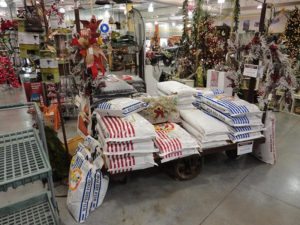
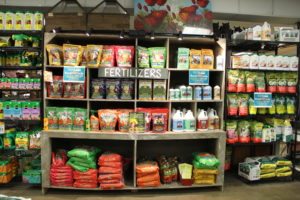
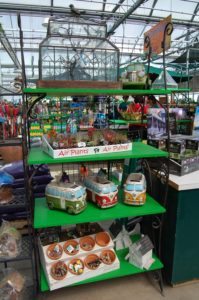
 Videos
Videos





